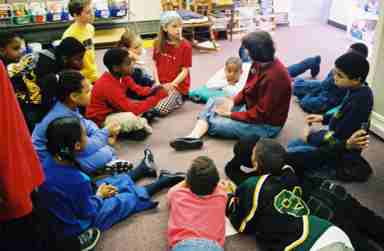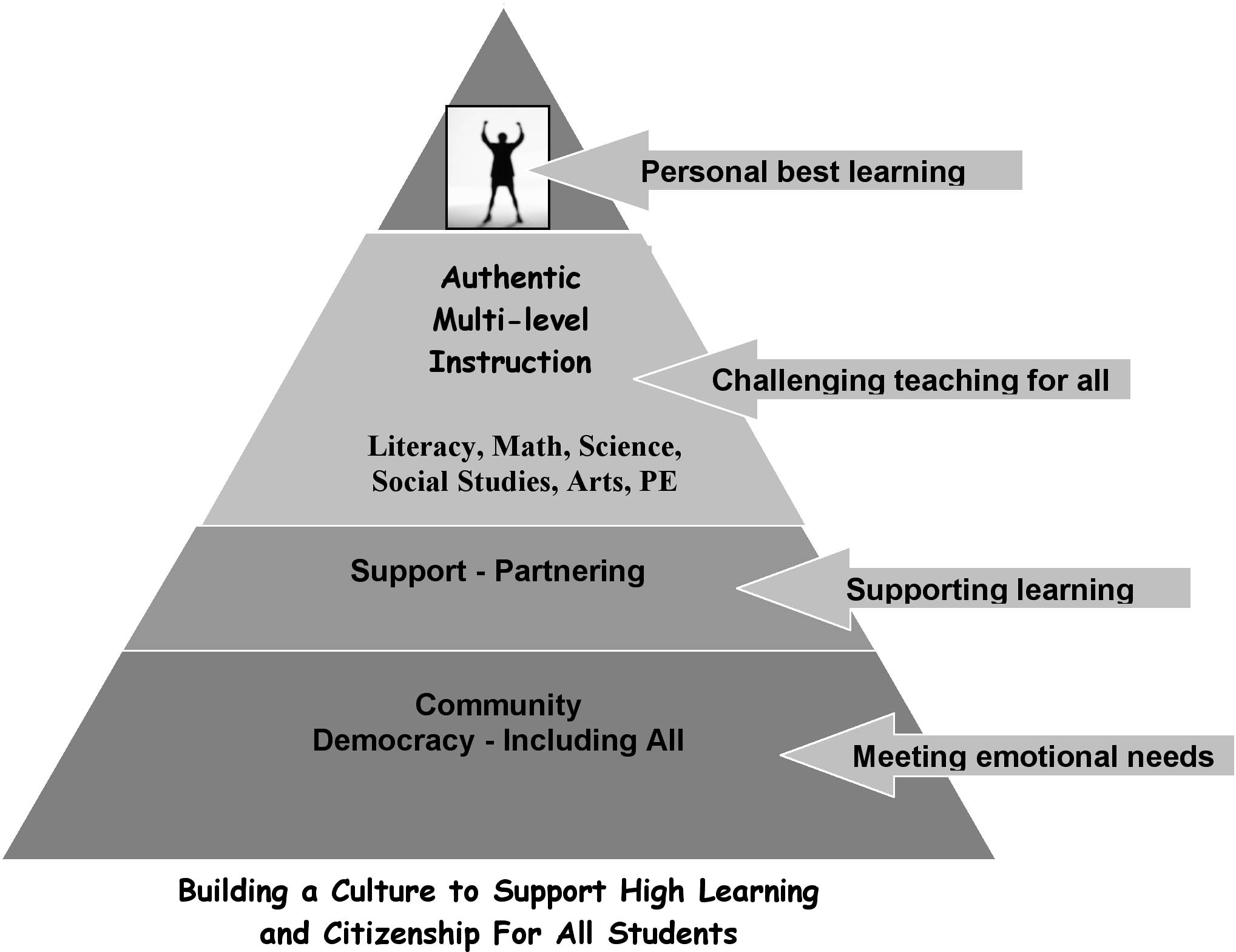 Creating
a culture for high learning and achievement. How can schools be designed to help create
high levels of learning among students
that increase
individual opportunity? How can schools help children become
citizens for democracy, providing social, business, and community leadership
to develop innovations and solve important problems. We must pay very close
attention to what helps, and what hurts in reaching these important ends.
Creating
a culture for high learning and achievement. How can schools be designed to help create
high levels of learning among students
that increase
individual opportunity? How can schools help children become
citizens for democracy, providing social, business, and community leadership
to develop innovations and solve important problems. We must pay very close
attention to what helps, and what hurts in reaching these important ends.
Many
schools, too many, use practices that assure that many children fail and
are left behind. It is as if such schools systemically and explicitly developed
a school deform plan, to use the language of James Kauffman. What are the
principles that guide practices of such schools? They include:
1. Demanding compliance and obedience of staff and students.
2. Segregating, tracking, and ability grouping.
3. Teaching to the middle using one size fits all instruction.
4. Creating a culture of pressure, tension, and competition.
5. Isolating adults from one another and assuring professional turf.
6. Parents and educators blaming each other.
These practices
work together to create conditions that hamper the learning process. Once
such cultures become
imbedded, they are difficult to change.
But change can and must occur if we are to meet the promise to our
children and create future citizen leaders for our communities. What are
the principles
that describe a school culture that supports high levels of learning
for all?
 After several
years of work, we developed Six Principles that represent a simple but comprehensive
synthesis of a broad range of scientific research
on practices
regarding schooling and classroom practices designed to maximize
learning at high levels. Each of these principles, we have found, is interactive
and mutually
reinforcing. They include:
After several
years of work, we developed Six Principles that represent a simple but comprehensive
synthesis of a broad range of scientific research
on practices
regarding schooling and classroom practices designed to maximize
learning at high levels. Each of these principles, we have found, is interactive
and mutually
reinforcing. They include:
1. Empowering
citizens for democracy.
2. Including all.
3. Authentic, multilevel instruction.
4. Building community.
5. Supporting learning.
6. Partnering with parents and the community.
Schools spend
most of their time on #3 -- instruction. That's as it should be. However,
it's also very clear from research and time spent in classrooms, that unless
a culture and environment is built in the school and classroom that encourages
a sense of exploration, provides a sense of safety and welcome, allows students
to work at their own level of challenge that students will shut down and
learning simply won't occur. However, the other principles provide a foundation
for cognitive and academic learning to occur (as illustrated in the graphic).
These Six Principles
of Whole Schooling create a culture and set of practices in schools and
classrooms that learning and growth. We know that for learning
to occur, a foundation must be laid upon which cognitive development can
be built. Such a foundation centers in having a place where the child feels
safe,
accepted, a sense of belonging, and cared for. Including heterogeneous students
in classes together is a critical component as is the practice of democracy,
systematic sharing of power within the school and classroom. Support to teachers
and students and partnering with parents and the community helps fill out
the picture of social, emotional, physical and cognitive support needed for
high
levels of achievement. While the language of school focuses primarily on
instruction and the academic subjects of school – reading, writing,
math, science and more, without attention to these foundation building blocks,
learning will
falter. These relationships are illustrated in the graphic. Following, we
describe how each of these principles play out in concrete situations in
schools.
Michael
Peterson, 2004
 Creating
a culture for high learning and achievement. How can schools be designed to help create
high levels of learning among students
that increase
individual opportunity? How can schools help children become
citizens for democracy, providing social, business, and community leadership
to develop innovations and solve important problems. We must pay very close
attention to what helps, and what hurts in reaching these important ends.
Creating
a culture for high learning and achievement. How can schools be designed to help create
high levels of learning among students
that increase
individual opportunity? How can schools help children become
citizens for democracy, providing social, business, and community leadership
to develop innovations and solve important problems. We must pay very close
attention to what helps, and what hurts in reaching these important ends.  After several
years of work, we developed Six Principles that represent a simple but comprehensive
synthesis of a broad range of scientific research
on practices
regarding schooling and classroom practices designed to maximize
learning at high levels. Each of these principles, we have found, is interactive
and mutually
reinforcing. They include:
After several
years of work, we developed Six Principles that represent a simple but comprehensive
synthesis of a broad range of scientific research
on practices
regarding schooling and classroom practices designed to maximize
learning at high levels. Each of these principles, we have found, is interactive
and mutually
reinforcing. They include: